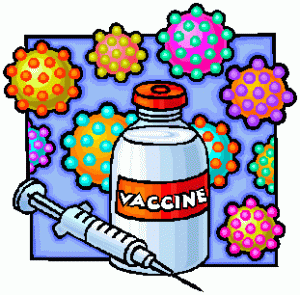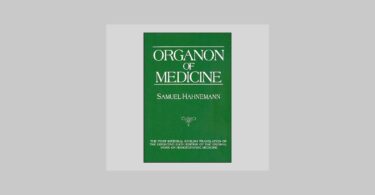Two Approaches to Prevention and Immunisation
As most readers know, Homeopathy Plus and I spent the last part of November in court with the Australian Competition and Consumer Commission (ACCC).
They accused us of misleading and deceptive statements about the whooping cough vaccine and Homeopathy’s ability to treat and prevent whooping cough.
(If this is news to you, please see Legal Matters)
As we wait for the Justice to examine the evidence and hand down a judgement I will be releasing a series of posts that discuss the events, circumstances, and consequences of the legal action launched by the ACCC.
It is my firm belief that it had nothing to do with “deceptive and misleading information” or “trade and commerce” but was the culmination of an 8-year struggle by certain groups to remove information on homeoprophylaxis (homeopathy’s ability to protect against epidemic disease) from our website and newsletters and out of the public eye.
The reasons for this struggle will become apparent in later posts but for the time being I want to lay the groundwork with information on two similar yet very different approaches to disease prevention. At the end of the post I provide links to more information and ways you can become involved or help.
Falling Short
 Whether it’s malaria, measles, or some other infectious disease, the world has always been plagued by epidemics. In recent times we’ve tried to control them by various vaccines and though they promised much, their drawbacks soon became apparent.
Whether it’s malaria, measles, or some other infectious disease, the world has always been plagued by epidemics. In recent times we’ve tried to control them by various vaccines and though they promised much, their drawbacks soon became apparent.
For example, vaccines were:
ñ not as effective as first hoped;
ñ slow to develop and produce;
ñ expensive;
ñ complicated to distribute and administer;
ñ carried minor to serious side-effects; and
ñ for some diseases, no vaccine existed
Bridging the Gap
In contrast, it seemed to me that homeopathy had a solution for both problems – disease and the shortcomings of vaccines. A quick check showed that it had been repeatedly and successfully used to prevent disease for more than 200 years – and during some of the world’s worst epidemics.
The benefits were obvious. It was:
ñ inexpensive;
ñ easily prepared;
ñ simple to distribute and administer;
ñ safe; and
ñ already had a number of prophylactics for the symptoms of each epidemic disease.
If homeopathy had been used to limit infectious diseases in the past, it could do the same again – and not just in the relatively well-protected West, but in countries that still suffer from cyclic epidemics.
That realisation was life-changing for me and the start of a journey that involved lobbying governments, distributing information, advocating its use at points of need and pressing for further research. It was also a realisation that took me to court. This is the story I hope to tell.
What I’ve Learnt
Each post will carry a lesson or two of what has been learnt along the way. In hindsight, this first lesson should have been obvious but it wasn’t; sometimes it is hard to be patient.
Lesson 1: Don’t expect others to know what you already know and accept.
Just because something has been around for 200 years, don’t expect others to know all about it too. They most likely won’t and more importantly, may have trouble understanding it on first pass. Settle in for the long haul and introduce it step by step.
Gathering the Records on Homeoprophylaxis
It started in the 1700s
I first started collecting the historical information on homeoprophylaxis – disease prevention by homeopathy – in 2005. It was the beginning of a long and eventful journey.
Accounts went back to the earliest days of homeopathy when Samuel Hahnemann, its founder, discovered Belladonna prevented the transmission of a virulent form of scarlet fever raging in his area. When Belladonna was given to people prior to exposure they did not contract the disease in spite of being in close contact with those already infected.
Other physicians began to prescribe it accordingly and the Prussian Government ordered its use during subsequent scarlet fever epidemics
Not long after, Hahnemann and others showed that homeopathic prophylaxis was also possible for cholera: when the indicated remedy was given to those at risk before exposure, they remained cholera free.
(I have included the references to these and following accounts in Homeoprophylaxis: Human Records, Studies and Trials found under Resources and Events at the bottom of this post.)
Epidemics and the spread of homeopathy
Historical literature was riddled with further accounts of homeoprophylaxis, including its use during the great epidemics. These epidemics took place before the age of the randomised controlled trial (RCT), but records and comparisons were still kept and showed that homeoprophylaxis was successful in treating and preventing cholera, typhoid, diphtheria, poliomyelitis, scarlet fever, smallpox and polio.
A sampling of accounts from the 1800’s show it was used by physicians across Europe for prevention during a cholera epidemic, in America for more than 5000 children during a polio epidemic, and in Germany to protect those caring for infected family members during a smallpox epidemic.
In fact, homeopathy performed so well that it spread rapidly around the world on the back of epidemic and pandemic diseases. Without its successes in these areas its early growth and adoption would have been much slower.
Evidence in recent records
In countries where homeoprophylaxis is still well-known and practised, governments use it to protect their populations, sometimes in the order of millions, against diseases such as dengue fever, chikungunya, meningococcal disease, Japanese encephalitis, leptospirosis, and malaria.
For example:
ñ When the Indian government introduced homeoprophylactics into the state of Andhra Pradesh, notifications of endemic Japanese encephalitis dropped to zero within 3 years;
ñ The governments of Brazil, Cuba, India and Colombia have used homeoprophylaxis to control epidemics of dengue fever – a disease which is already endemic in 110 countries and now present in Australia, and for which no vaccine exists;
ñ Cuba, a country which manufactures and supplies vaccines to other countries, has found it is more efficient and less expensive to manage its annual leptospirosis epidemics with homeoprophylaxis rather than by a vaccine;
ñ The Brazilian government saved many lives with a homeoprophylactic during two meningococcal epidemics; and,
ñ India regularly turns to homeopathy to control its malaria epidemics.
In addition, homeoprophylaxis is being used by medical doctors and non-government organisations. When prophylactics were given:
ñ for a flu epidemic, the incidence of flu in factory workers was reduced, or the time of illness shortened if flu was contracted;
ñ for a chikungunya epidemic in Kerala, India, doctors reported a high level of protection in those who received the genus epidemicus;
ñ for diphtheria, recipients became Schick negative indicating the presence of antibodies;
ñ to family members of those infected with viral hepatitis, they remained disease-free;
ñ to children in Brazil at risk of respiratory tract infections and influenza, the incidence of infections over the next 12 months was much lower;
ñ to communities and refugees in South Africa where malaria is endemic, a reduced number of episodes were reported.
And surprise, surprise, I even found a few small studies on homeoprophylaxis and whooping cough!
Under the microscope
In parallel to these real world applications, homeoprophylaxis is also being examined in animal models and at the bottom of Petri dishes and test tubes where increased resistance to the malaria parasite was produced in mice, Japanese encephalitis was controlled in exposed chick embryos, and the ability of viruses to pass on respiratory tract infections such as coughs, colds, and flu was neutralised or dampened.
Vaccination: A crude form of homeopathy
It should be apparent from the available evidence that homeopathy not only treats but prevents disease. It does this, not by haphazard trial-and-error methods, but though sound scientific processes.
Homeopathy is based on a natural law or principle – the Law of Similars. By this law it is possible to rationally predict the treatment and preventative effects of medicines.
A classic example is coffee. It causes insomnia so, as a homeopathic remedy, it treats types of insomnia. Malaria is another example. Malaria parasites cause malaria but, as a homeopathic remedy, they prevent malaria.
This ‘like treats like’ concept is surprisingly simple and, while some go to great pains to deny it, is also the rationale behind vaccines.
One of the pioneers of immunology and the first winner of the Nobel Prize in Physiology or Medicine, Emil Adolf von Behring, was forthright in acknowledging homeopathy when he said:
“Jenner’s discovery remained a relatively isolated episode in medicine until Pasteur connected its origin with a principle that cannot be better characterized than by Hahnemann’s word: homeopathic. What else causes epidemiological immunity in a sheep vaccinated against anthrax, if not the influence previously exercised by a micro-organism having similar characteristics to those of fatal anthrax? And what technical term appropriately defines this influence exercised by a similar micro-organism if not the word of Hahnemann: homeopathy?”
Problems avoided and benefits realised
Homeoprophylaxis has a remarkable record of safety – vaccines less so. From the homeopath’s point of view they are still associated with risks: the dose is too strong, they have toxic additives, and they’re given by inappropriate pathways.
Homeoprophylaxis has avoided these problems. It’s also versatile, inexpensive, quick to produce and easy to distribute.
Keeping these points in mind, I’ll return to Von Behring who went on to say:
“I am touching here upon a subject anathematized till very recently by medical penalty: but if I am to present these problems in historical illumination, dogmatic imprecations must not deter me.”i
The same sentiments are true today – dogma and penalty must not be allowed to restrict information on homeoprophylaxis or deprive others of this safe, simple option. The time has come for all of us – governments and individuals – to take a closer look at homeoprophylaxis and how it relieves the burden of disease.
What I’ve learnt
(Each post carries a lesson or two of what has been learnt along the way. Other lessons are found in earlier posts)
Lesson 2: Those who scream the loudest for evidence on homeoprophylaxis are usually the least interested in examining it.
Unfortunately, it’s human nature to automatically assume that facts are wrong if they don’t agree with our existing beliefs and theories. Having said that, how have you responded to the above information?
Coming Next
Future posts show what I did with the prophylactic information, why some were offended or upset, the inevitable backlash that followed, attempts at intimidation and suppression, what happens when a matter like this goes to court, what is lost when we don’t speak out about the truth, and what we should do for the future.
Resources and Events
1. Homeoprophylaxis: Human Records, Studies and Trials
2. Free Webinar: Homeoprophylaxis and Vaccines – Benefits, Concerns and Research
3. Our Homeopathy Group
4. Fighting Fund
References
i Behring, Beitrage zur Experimentellen Therapie, H. 2, 26, 1906.
– See more at: http://homeopathyplus.com.au/taken-to-court-2-gathering-the-information/#sthash.WXRcmkKy.dpuf
Note: The information we provide and comments we make are from the homeopathic perspective. They are not necessarily endorsed by sectors of some governments, medico-pharmaceutical groups, “skeptic” organisations or those unfamiliar with homeopathy. Further information about the purpose of our material may be read in the disclaimer at the foot of our website: www.homeopathyplus.com.au – See more at:







Thanks for the update. I especially appreciate all of the corroborating evidence. Good luck to you!
Hi Fran,
I think that referring to one of Vicente Rosas-Landa’s Works would be of great value here. He triggered production of humoral and celular immiunity in rabbits against Tuberculosis using a nosode. This is no “holistic fantazising”, it was measured in a laboratory, so there is No Doubt it worked. I hope this will be of help.
Greetings from Mexico.
Good luck Fran. Well done for standing up for Homeopathy
Thank you very much for sharing your knowledges Fran Sheffield!
I would like to have, if you can send to me the sources of the works/proovings you named in your article about epidemic diseases amd homeoprophylaxis; i have a magazine of Brasil about a study made some years ago, but as I am fighting in our Portuguese Medical Order for the divulgation of Homeopathy to our colleagues, I would like to have the greater number of this kind of informatioss please
Hug you friendly
Francisco Patrício
Many thanks to Fran, and good luck with the case (and with the appeal?)
References:
Right now, I’m getting no-find 404 at those quoted links as quoted.
Working links are
http://homeopathyplus.com.au/taken-to-court-2-gathering-the-information/
http://homeopathyplus.com.au/taken-to-court-two-approaches-to-prevention/
In any case, it looks as though many vaccine studies are pure fraud and manipulation of the maths, in particular when it comes to individual cases of inconvenient adverse reactions.
Homeoprophylaxis is interesting in that the genus epidemicus is unlikely to be individualised, although constitutional treatment is preunably likely to be helpful also.
Overall this site is very informative but a few common inaccuracies across homeopathy are seen in this article. The biggest and i think most concerning is the idea that using the Malaria parasites to prevent Malaria is homeopathy, its not. This is a form of Isopathy not Homeopathy. It doesn’t mean its not relevant or effective but its not Homeopathy. Isopathy refers to the decision to ignore the symptom picture and give the substance which caused the problem in the first place. It is common in isopathy to give a product of a disease (nosode) for the disease itself, thus administering the same thing in an attenuated form. Many people use it as a shortcut to repertorising.
)
As homeopaths we should be familiar with the differences and not get them confused. This is part of the misconceptions that conventional medicines bring into the discussion and we should be able to correct this massive error in understanding.